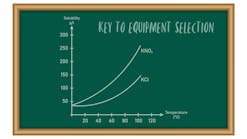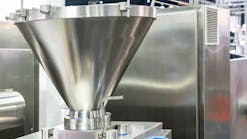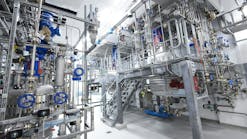Latest Twin-Shaft Mixer Is Designed For Energy Savings
Dinnissen Process Technology’s twin-shaft Pegasus mixer can offer energy savings of up to 60%. The mixer is fitted with a twin-shaft mixing mechanism rotating in the opposite direction. As a result, a fluidized zone is created during the mixing process, which lies at the heart of the entire mixing concept.
The twin-shaft mixing mechanism throws the raw ingredient particles lightly and loosely upwards with a vertical acceleration equal to the force of gravity (Froude number = ca 1). The process of causing the particles to float in air is designed to be energy-efficient. This principle is the first step toward realizing overall energy savings of 60%. In addition, a situation in which the raw material particles are floating gently through the mixer is ideally suited to spraying powders and liquids onto the particles. As a result, the raw materials which need to be added and mixed in, are distributed over the floating particles as soon as they are fed into the mixer.
The new series of Pegasus mixers makes it possible to reduce mixing times to one-third of the mixing times that can be realized using traditional ribbon mixers or single-shaft mixers. Reducing the mixing time further reduces energy consumption by 30% to 40%. In addition, the short mixing time makes it possible to increase capacity by 15% to 20%.
Dinnissen recommends the standard application of a frequency control unit to allow for the stepless control of and input to the mixer. By controlling the speed of the mixer in this fashion, it becomes possible to further significantly increase the energy savings realized with the Pegasus Mixer.





